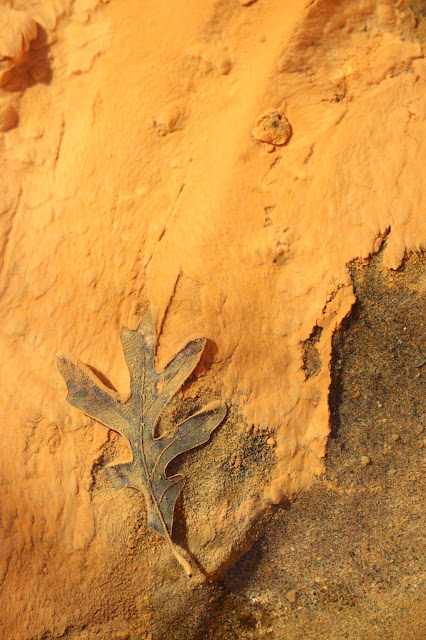Funky Fluorescent Find
 I went out to Mullica Hill, NJ today to see if I could find a few nuggets of vivianite, an unusual mineral that ranges from pale blue to black, depending on how long it has been exposed to light. I found a fossil oyster shell (Exogyra sp.) which was partially replaced by vivinite that had turned almost black in the sunlight. There was some white material that looked like less-altered shell that might fluoresce. When I got home, I pulled out my UV lamp. To my shock, that white spot glowed powder blue instead of my expected calcite orange, and the rest of the shell, which I did not expect to glow at all, was a brilliant red!
I went out to Mullica Hill, NJ today to see if I could find a few nuggets of vivianite, an unusual mineral that ranges from pale blue to black, depending on how long it has been exposed to light. I found a fossil oyster shell (Exogyra sp.) which was partially replaced by vivinite that had turned almost black in the sunlight. There was some white material that looked like less-altered shell that might fluoresce. When I got home, I pulled out my UV lamp. To my shock, that white spot glowed powder blue instead of my expected calcite orange, and the rest of the shell, which I did not expect to glow at all, was a brilliant red!
Only one of the valves in this articulated shell glowed. The shell that was underneath and not exposed to the sun appears the same, but doesn't glow. This is typical of better-preserved shells from other localities. In ways we do not fully understand, the sunlight alters the shell material so that it fluoresces. However, since this was mostly replaced by non-fluorescent ironstone, this was a surprising discovery indeed!
This is one of two specimens I brought home that glowed at all. The rest absorb every bit of the UV light into a black abyss. Weird.
The next time I go out there, I'll have to bring my field UV lamp.



Comments
Post a Comment